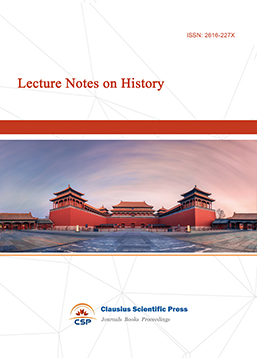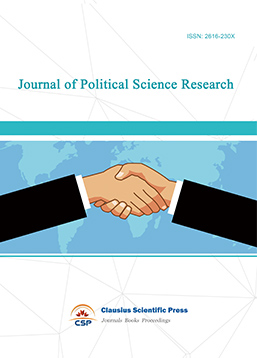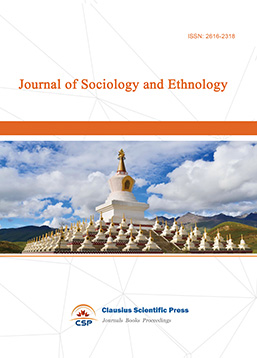Becoming Momo: A Digital Ethnography of Collective Anonymity and Everyday Algorithmic Resistance in China's Platform Society
DOI: 10.23977/mediacr.2025.060509 | Downloads: 6 | Views: 155
Author(s)
Xuan Wang 1
Affiliation(s)
1 Zhengzhou University, Zhengzhou, Henan, China
Corresponding Author
Xuan WangABSTRACT
This study investigates the collective anonymity phenomenon known as the "Momo Army" on the Xiaohongshu platform. It aims to analyze why young users choose to abandon personalized identity markers to integrate into collective anonymous groups, and how this behavior constitutes an algorithmic resistance strategy. Employing a combination of digital ethnography and in-depth interviews, the research conducted six months of systematic observation from January to June 2023. Fifteen representative users participated in semi-structured interviews, with data processed through thematic analysis. Findings reveal four core motivations for collective anonymity: concealing individual identity to prevent privacy leaks, mitigating "context collapse" through identity homogenization, building group belonging through anonymity, and employing collective anonymity as an algorithmic resistance strategy. The Momo community creatively addresses identity dilemmas in the algorithmic era through "secondary anonymization," not only evading algorithmic discipline but also forging a new form of "digital subjectivity." However, this approach carries risks such as group polarization, low-quality content, and media dependency. Research indicates that collective anonymity transcends traditional privacy frameworks, emerging as an innovative practice of everyday resistance. "Collective invisibility" reconstructs digital subjectivity and fosters "anonymous solidarity," revealing that algorithmic power is not unidirectional domination but is constantly countered by users' creative resistance. Future efforts must balance privacy protection with freedom safeguards to promote a healthy internet ecosystem.
KEYWORDS
Collective Anonymity, Momo Army; Algorithmic Governance, Digital Resistance, Social MediaCITE THIS PAPER
Xuan Wang, Becoming Momo: A Digital Ethnography of Collective Anonymity and Everyday Algorithmic Resistance in China's Platform Society. Media and Communication Research (2025) Vol. 6: 56-66. DOI: http://dx.doi.org/10.23977/mediacr.2025.060509.
REFERENCES
[1] Andrejevic, M., Burdon, M. Defining digital footprints: Surveillance, control, and the logic of modulation. Media International Australia. 2015; 156(1):67-78.
[2] Goffman E. The presentation of self in everyday life. New York: Anchor Books; 1959.
[3] Frame A. Reflexivity and self-presentation in multicultural encounters: Making sense of self and other. In Reflexivity in Language and Intercultural Education. London: Routledge; 2014: 81-99.
[4] Marwick, A.E., Boyd, D. I tweet honestly, I tweet passionately: Twitter users, context collapse, and the imagined audience. New Media & Society. 2011; 13(1):114-133.
[5] Strauß, S., Nentwich, M. Social network sites, privacy and the blurring boundary between public and private spaces. Science and Public Policy. 2013; 40(6):724-732.
[6] Zhu, J. Competitive mechanisms for different channels, different choices: the new media trade-off demand theory. China Media Report. 2004. newmedia.cityu.edu.hk
[7] Guo, M. Stranger Resonance, Virtual Identity, and Social Fatigue: Emotional Transmission Behind the Viral Spread of 'Praise Groups'. Modern Communication. 2019; 41(10):152-155.
[8] Chen, H.D., Liu, L.D. Can Collective Anonymity Avoid Cyber Violence? A Case Study of the 'Momo' Group. Journal of Shanghai Jiao Tong University (Philosophy and Social Sciences). 2025; 33(1):78-91.
[9] Liu, Y., Li, P.S. Analysis of the Social Communication Model Combining "Acquaintance" and "Anonymity": A Case Study of "Wumi" App. News Front. 2016; 2016(5):125-127.
[10] Zhang, X., Tang, T.T. Concealment as Revelation: Platforms, Motivations, and Performances of Youth Anonymous Social Interaction. Journal of Chinese Youth Studies. 2024; 2024(4):43-51.
[11] Foucault M. Discipline and Punish: The Birth of the Prison. New York: Pantheon Books; 1977.
[12] Hou, Q.Y. Research on Psychological Motivations for Anonymous Social Interaction Among Youth Groups: A Case Study of the "Momo" Group on Xiaohongshu. All-Media Exploration. 2023; (8).
[13] Marwick A E. Status Update: Celebrity, Publicity, and Branding in the Social Media Age. New Haven: Yale University Press; 2013.
[14] Fan, H.X., Sun, J.B. Algorithmic Bias and Digital Curse in the Big Data Era: Breaking the "Information Cocoon". China Publishing Journal. 2019; 2019(10):60-63.
| Downloads: | 20598 |
|---|---|
| Visits: | 483989 |
Sponsors, Associates, and Links
-
Journal of Language Testing & Assessment

-
Information and Knowledge Management

-
Military and Armament Science

-
Journal of Human Movement Science

-
Art and Performance Letters

-
Lecture Notes on History

-
Lecture Notes on Language and Literature

-
Philosophy Journal

-
Science of Law Journal

-
Journal of Political Science Research

-
Journal of Sociology and Ethnology

-
Advances in Broadcasting


 Download as PDF
Download as PDF